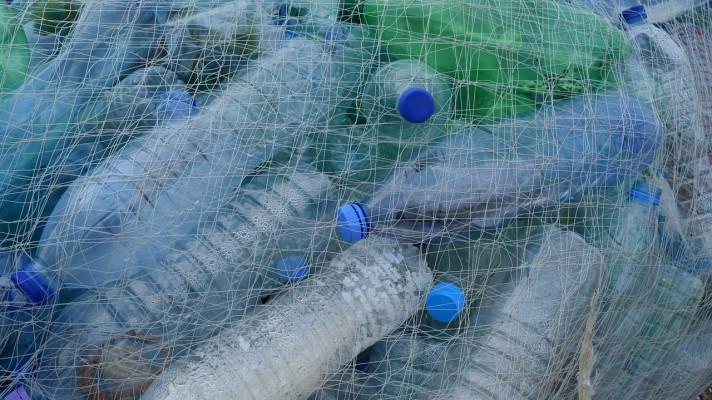Enhancing qualities of starch-based bioplastic
New research has produced a starch-based bioplastic with similar properties to equivalent traditional oil-based plastics. By adding an ammonium salt to thermoplastic starch (TPS) the study demonstrated an improvement in the plasticisation process, rendering it flexible, mouldable and potentially recyclable.
Until recently, petroleum based plastics have dominated the manufacture of this ubiquitous product but, with diminishing reserves of oil, there is a need for more sustainable methods of plastic manufacture. This has largely centred on polylactic acid (PLA), which is produced from starch and used in packaging, disposable cups and cutlery as well as biomedical applications. PLA has the additional advantage of being biodegradable. However, due to the number of processing steps, the comparative cost of making PLA is high and a cheaper and more sustainable alternative is thermoplastic starch (TPS). This is formed by integrating small charged organic compounds into the starch structure. Examples of suitable compounds are water, glycerol and urea.
The research examined the process of mixing urea and starch to produce TPS with the addition of the plasticisation agent choline chloride (ChCl). This ammonium salt helps to break up the hydrogen bonding in the starch in the plasticisation process. Corn starch, urea and ChCl were mixed together and heated. Once it was cooled the result was a soft, flexible, opaque cheese-like substance.
The strength and flexibility (viscoelasticity) of the resulting bioplastic was tested using two methods (Differential Scanning Calorimetry and Quartz Crystal Microbalance). Both methods indicate that the TPS made from urea and the ammonium salt is stronger and more flexible than TPS manufactured using only urea. The QCM method also indicated that the initial solidification (or gelation) process of the TPS is relatively rapid. A comparison with high-density polyethylene (HDPE) indicates that the TPS produced with ammonium salt is similar in strength and plasticity but significantly less easy to mould or shape (ductility).
The research investigated an alternative solidification process under compression moulding whereby the plastic is placed in a heated mould and pressure is applied to force the plastic in contact with all mould areas. This produced a transparent plastic instead of the opaque plastic produced under normal conditions. The higher pressure is thought to cause a greater penetration of the plasticising ammonium salt into the starch structure. When TPS was made without the salt and solidified with compression moulding the resulting plastic was still opaque, again indicating that the salt improves plasticisation.
Lastly, the research investigated the potential for recycling by grinding the compression moulded TPS into powder and then remoulding it back into plastic. The result was a plastic sheet with very similar qualities to the original, indicating that it loses very little of its transparency and demonstrating that it is re-mouldable and recyclable. However, to be recycled the TPS would need to be separated from conventional plastics and this could have implications for the feasibility and costs of recycling facilities. As TPS is made from pure starch, it is envisaged that it would be biodegradable and break down under normal compositing conditions without any harmful residues but further investigation is necessary to ensure this would be the case.
A major limitation to TPS is its susceptibility to absorb moisture, however the research indicated that the salt modified TPS was less susceptible than TPS made with only urea and this problem can be further overcome by coating it in PLA. A concern that is raised for bioplastics in general is that sourcing the raw materials (starch in this case) on a large scale could have negative impacts on land use and cause possible deforestation in order to grow the necessary crops, such as corn. The researchers of this study are currently examining the possibility of using waste starch as a material and will be publishing research on this in the future.
Source: Abbott, A.P., Ballantyne, A.D., Conde, J.P. et al. (2012) Salt modified starch: sustainable, recyclable plastics. Green Chemistry. 14:1302-1307. Doi: 10.1039/c2gc16568f.
Contact: andrew.abbott@le.ac.uk
ZDROJ: Science for Environment Policy
